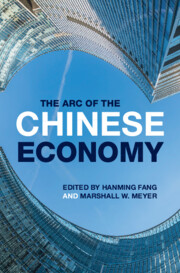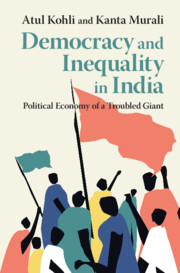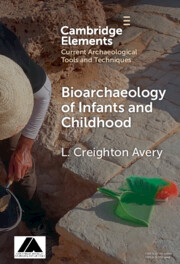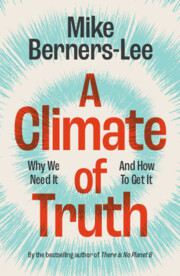Refine search
Actions for selected content:
1153 results
Growth and neurodevelopment at 18–22 months in term infants with CHD undergoing cardiopulmonary bypass surgery: a retrospective cohort study
-
- Journal:
- Cardiology in the Young , First View
- Published online by Cambridge University Press:
- 09 December 2025, pp. 1-6
-
- Article
- Export citation
4 - Development and Growth
-
-
- Book:
- Explaining the History of American Foreign Relations
- Published online:
- 24 October 2025
- Print publication:
- 13 November 2025, pp 82-102
-
- Chapter
- Export citation
Taxing your cake and growing it too: public beliefs on the dual benefits of progressive taxation
-
- Journal:
- Journal of Public Policy , First View
- Published online by Cambridge University Press:
- 11 November 2025, pp. 1-20
-
- Article
-
- You have access
- Open access
- HTML
- Export citation

The Arc of the Chinese Economy
-
- Published online:
- 30 October 2025
- Print publication:
- 13 November 2025
Introduction
-
- Book:
- Democracy and Inequality in India
- Published online:
- 11 October 2025
- Print publication:
- 30 October 2025, pp 1-12
-
- Chapter
- Export citation
Effects of methylphenidate on growth, blood pressure, and heart rate in children and adolescents with ADHD
-
- Journal:
- Irish Journal of Psychological Medicine , First View
- Published online by Cambridge University Press:
- 21 October 2025, pp. 1-8
-
- Article
-
- You have access
- Open access
- HTML
- Export citation
Arcuatula senhousia in the UK: evidence to inform current status and future invasive potential
-
- Journal:
- Journal of the Marine Biological Association of the United Kingdom / Volume 105 / 2025
- Published online by Cambridge University Press:
- 20 October 2025, e118
-
- Article
- Export citation

Democracy and Inequality in India
- Political Economy of a Troubled Giant
-
- Published online:
- 11 October 2025
- Print publication:
- 30 October 2025
Chapter 2 - Nutrition, Growth and Vegetative Capacities
-
- Book:
- Galen on Human Physiology
- Published online:
- 28 July 2025
- Print publication:
- 02 October 2025, pp 56-87
-
- Chapter
- Export citation
On the central exponent of superalgebras with superinvolution
- Part of
-
- Journal:
- Canadian Mathematical Bulletin , First View
- Published online by Cambridge University Press:
- 22 September 2025, pp. 1-18
-
- Article
- Export citation
Chapter 3 - The Shortest Distance between Two People Is a Story
- from Part I - Storying-to-Learn: How Stories-that-Matter Help Us Appreciate Social Work in Action
-
-
- Book:
- Learning through Social Work Stories-That-Matter
- Published online:
- 28 August 2025
- Print publication:
- 11 September 2025, pp 37-45
-
- Chapter
- Export citation

Bioarchaeology of Infants and Children
-
- Published online:
- 25 August 2025
- Print publication:
- 25 September 2025
-
- Element
- Export citation
Minimum Reporting Set of nutritional intake and growth outcomes in preterm nutrition studies: A Delphi study
-
- Journal:
- Proceedings of the Nutrition Society / Volume 84 / Issue OCE2 / June 2025
- Published online by Cambridge University Press:
- 24 July 2025, E163
-
- Article
-
- You have access
- Export citation
Dietary protein, muscle and the fat-free mass within the Protein-Stat control framework: Blaxter Award Lecture 2025
-
- Journal:
- Proceedings of the Nutrition Society , First View
- Published online by Cambridge University Press:
- 04 July 2025, pp. 1-19
-
- Article
-
- You have access
- Open access
- HTML
- Export citation
11 - Oceans and Marine Resources
- from Part III - Application to Environmental Sustainability
-
- Book:
- Economics for a Sustainable World
- Published online:
- 14 July 2025
- Print publication:
- 12 June 2025, pp 318-350
-
- Chapter
- Export citation
2 - Sustainable Economic Development
- from Part I - Introduction and Key Concepts
-
- Book:
- Economics for a Sustainable World
- Published online:
- 14 July 2025
- Print publication:
- 12 June 2025, pp 32-68
-
- Chapter
- Export citation
Migration, child education, human capital accumulation, and a brain dilution tax
-
- Journal:
- Journal of Demographic Economics / Volume 91 / Issue 4 / December 2025
- Published online by Cambridge University Press:
- 27 May 2025, pp. 683-700
-
- Article
- Export citation

A Climate of Truth
- Why We Need It and How To Get It
-
- Published online:
- 27 March 2025
- Print publication:
- 27 March 2025
2 - Standing Further Back
-
- Book:
- A Climate of Truth
- Published online:
- 27 March 2025
- Print publication:
- 27 March 2025, pp 21-36
-
- Chapter
- Export citation
Chapter 10 - Spirituality
-
- Book:
- Essentials of Social and Emotional Intelligences
- Published online:
- 25 March 2025
- Print publication:
- 27 March 2025, pp 215-246
-
- Chapter
- Export citation




